It’s no secret that traditional academic grading is a short-sighted and limited assessment tool for students and teachers alike. The information that can be extracted from a report card is often little more than “this student knows 80% of what we call ‘Math’.” Without going much further into this, as it has been discussed to death, several alternative grading systems that are more holistic have emerged. Some use emotions, other use images, or lengthy descriptions from teachers.
The latest trend is using learning analytics or educational data mining to pair technology with student behaviour to create learner profiles. What I am currently exploring aims to use speculation as an educational tool, enabling students to speculate about the future by referencing history, current news, and both expert and peer speculations.
My belief is that the power of speculation can really shine when students realize that their ideas are in fact all interconnected in some way, not only to each other but also with all other previously conceived ideas in some way.
Let’s start the exploration of this concept by placing some event in time, be it something the teacher assigns or a piece of news that is current.
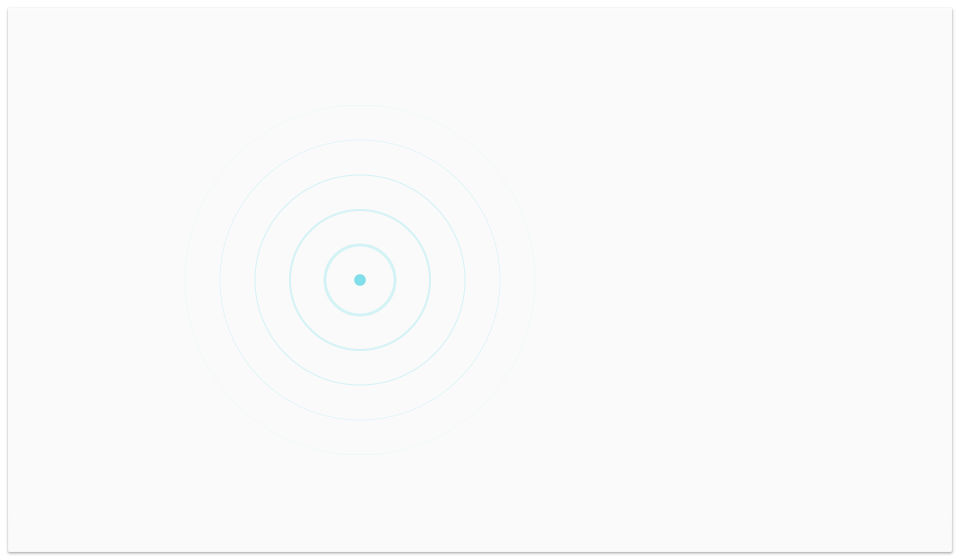
The important thing to keep in mind here is that the flow that emerges from this point is the natural flow of ideas and conversations, not just a mechanic of the speculation tool. This is why it is in fact powerful.
Say that this event here is a fictional story created by the teacher which stipulates that the Wright brothers died on their first flight rather than being successful. Don’t worry about the subject this class is actually supposed to be teaching, no human ever had an interesting conversation that started with “today, at this bar, I will be talking with you about history. Let’s begin in 1921.”
Claims that alter major events in history or ask people to imagine something often cause controversy, so from the point we previously created, we can imagine a few viewpoints emerging.

As you can see here, not all points made will be created at exactly the same point in time. Some people may be more focused on what happens in the near future after an event whereas others may be more long-term thinkers. Note that neither of these is negative or positive, but they are interesting data points that help us understand how someone thinks as opposed to how well someone remembers the spelling of ‘mitochondrion’ (I mean shit, I just Googled it anyway). By understanding how a pupil thinks, we can better work with them to either reinforce that behaviour if it is one that is desired, or to help change it if not. The important things is that the students be aware of this information and empowered to form their own opinions about how they want to think, with the teacher’s role being to use past experience and wisdom inform and guide around this.
Back to the story, we can see that we have four main lines of thought that emerged suggesting potential futures following the death of the Wright brothers. Of course from those four points, many more points will emerge that will push the story forward, or fill in the blanks where some points didn’t. What tends to happen with opposing speculation branches that stem out of an original point is that the details in them may be found in a common point of speculation that is made at a later date.
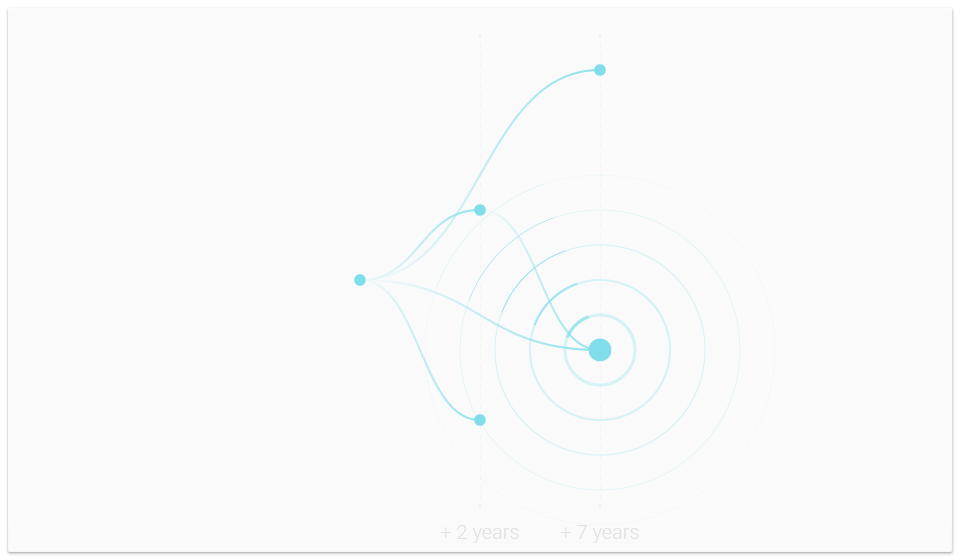
You can see above that the point in the lower right has information that is related to both branches at the +2 years mark. In fact, because it’s related to previously opposing views we can assume, given the absence of any contradictory data, that this point bears more heft — so to speak.
Of course the claim can also be made that people are simply looking for connections where they may not exist. This could be because they are jumping onto the bandwagon of an opinion that is growing quickly, or because that speculation point has influential community members backing it. The heft that is attributed to this point is by no means a seal of quality, but it does make it more difficult to oppose something that is citing multiple perspectives.
E.g. I believe that because the Wright brothers died, the Germans were then the first to develop the first plane two years later. You, on the other hand, believe that it another American. However, we both agree that because it wasn’t the Wright brothers, this ultimately led to Germany’s victory in WWII.
From here, we see how the branches splinter off into further branches.

In this web we can see that data is flowing from point to point, sometimes merging only to split once again at a later point.
So far, we’ve only been exploring the future and speculations. Another core component for validating stories is history. History is also relevant because it’s the bank of facts that the students will draw on in order to acquire information. Do not confuse the word history for the subject of history in class. Literally every subject has the sort of history I’m referring to here. When you learn Newton’s law in physics, this is history.
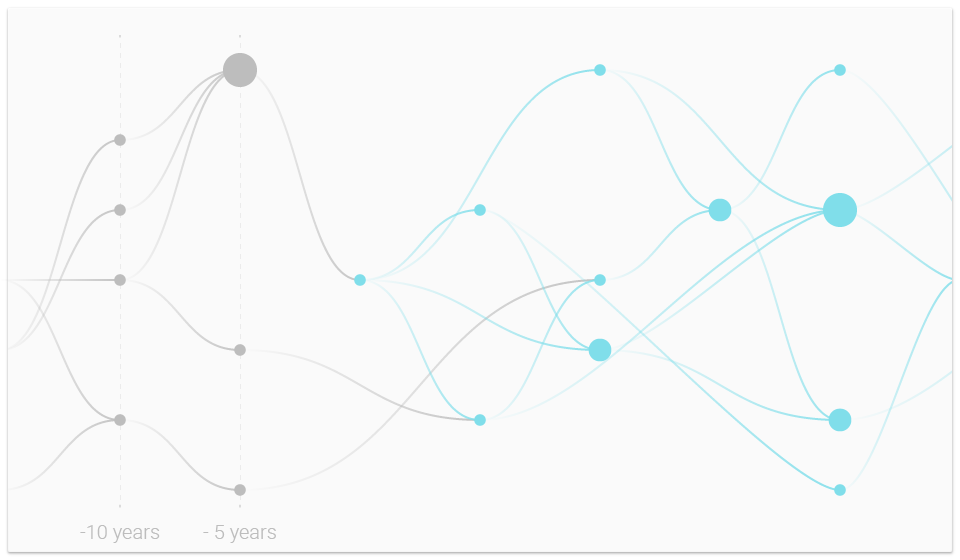
Now we can see how some stories from history are relevant though not directly to the actual event. It is entirely plausible that a student draws a connection between information made 5 years before the key incident and a speculation made 2 or 7 years after the incident, without needing to connect it to the fictional story of the Wright brothers dying too soon.
This would simply mean that a student has found a piece of history that is relevant to the speculations regardless of what happened to the brothers.
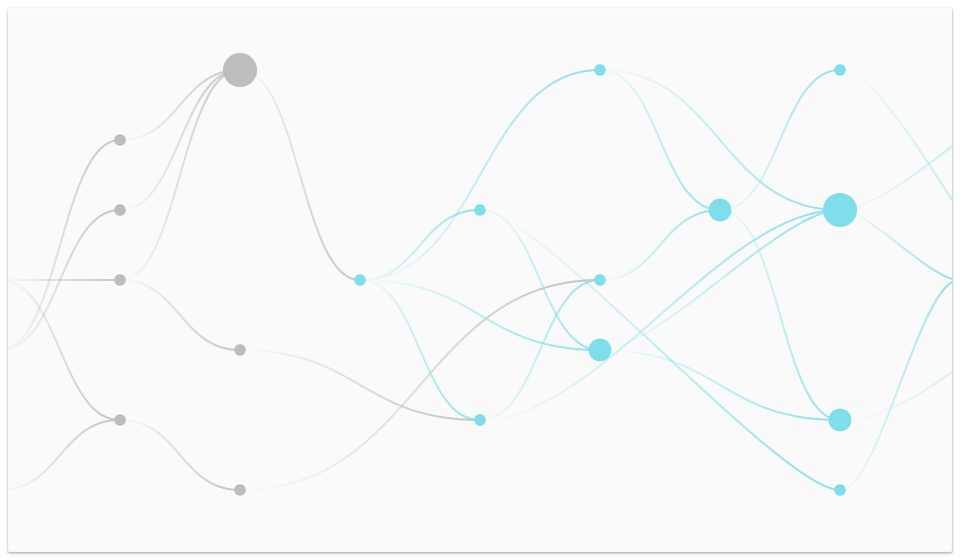
We have come full circle, back to the image that was at the head of this article. This is a mangled web of fact, opinion, and speculation.
It’s stored and logged, and all the data is transparent and available to the students so they may assess themselves. They can click through this data and see which threads different students have contributed too and even trace through what they believe is the thread they agree with most.
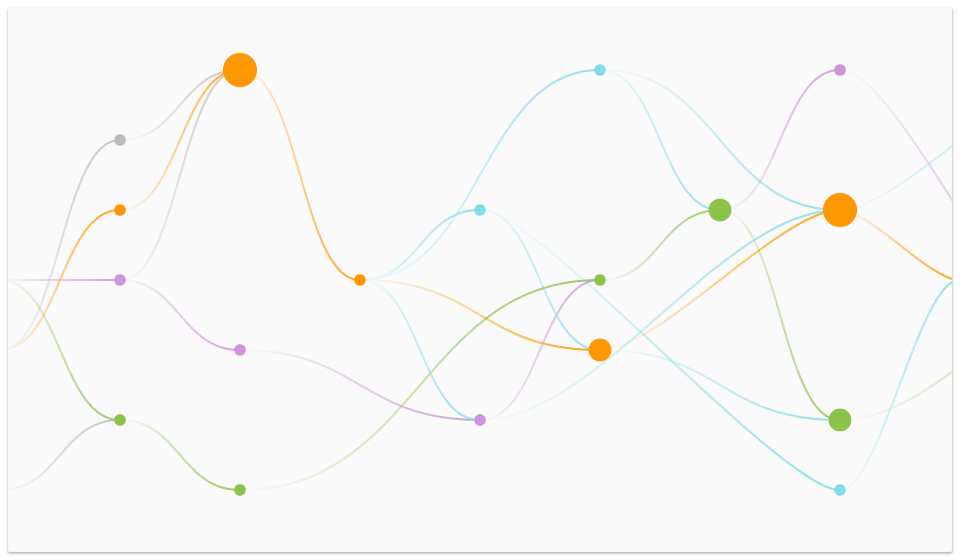
These coloured storylines are able to be analyzed so that we can see who contributed to them, what sources are cited and references, and what is the sentiment of any given thread.
In some cases, for example, with the green and purple lines, we can see that there is a small stretch where a complete overlap occurs. This sort of visualization and data logging serves to show how interrelated and intertwined fact, opinion, and speculation really are. It allows students to better see how ideas come about by engaging in generating speculations themselves. The way the system is built means that a mandatory paper
trail generated for each submission, since a submission has to be linked to something. This will give learners the unique opportunity examine their thinking by revealing not only their final idea, but also the methods and other ideas that were involved in helping them arrive to where they wanted to go.
This level of self-assessment is rarely exhibited in many systems. Often, the final outcome is far more important than the method, and even when the method is considered (such as showing the work in math) it is a final outcome in and of itself. Another thing that a system like this would show is how an idea is never an entity that is purely the cause of an individual. My hope is that highlighting the interconnectedness of ideas would ultimately reduce the atrocious levels of competitiveness that is rampant in schools with traditional grading. It would be a system that would better prepare for a sustainable future where ownership and competition are far less toxic as concepts.
My challenge now will be to design this system and figure out how to analyze and make sense of the data that is submitted into it. The ways in which the data is presented to both the students and the teachers is critical as well, as the avoidance of any terminology that polarizes any way of thinking into positive or negative categories would only make the system an equally bad alternative to grades. One of this system’s priorities is to highlight the importance of diversity in methods of thinking and approaches because only through that can the students achieve interesting speculations and stories on the system.
This is a progress update entry in my 7 week final thesis project at CIID. You can read all the other entries here.

